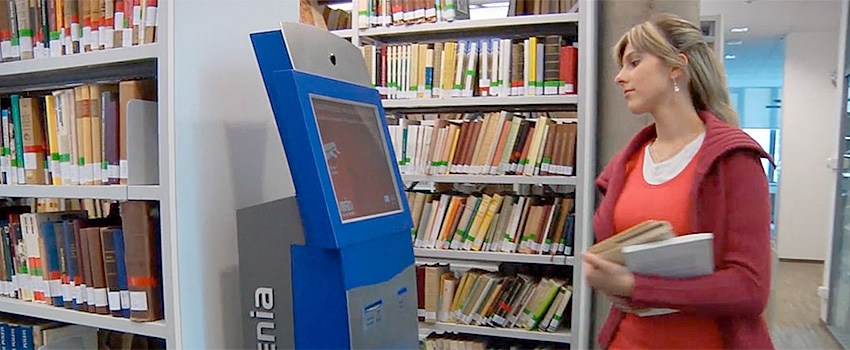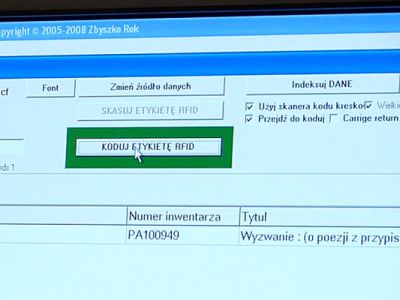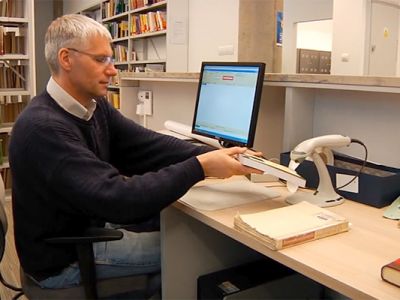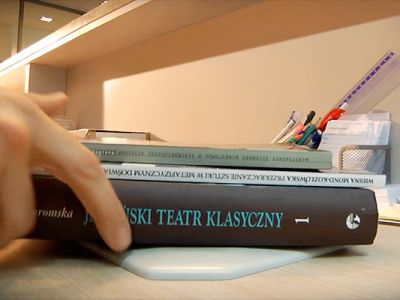RFID borrowing

In many libraries using RFID solutions, the users may access those collections made available under the so-called free access system. They can freely search through the library resources and select items they wish to borrow. The borrowing process itself is simple and friendly for both librarians and readers. Selected items can be borrowed independently by using a dedicated self-check system or the librarian system.
The library system recognises each user by their personal library card, and recognises books based on information on a programmed RFID library tag. Then it assigns the book user to its account, and a confirmation is printed at the end of the borrowing process.
Library users with disabilities can also successfully borrow books on their own through the use of a system that features an adjustable table height system and changeable screen display mode.
RFID tag encoding system
The RFID technology used enables very quick introduction of new publications to the library resources. Changes to the tag memory are made almost immediately, which measurably speeds up the book borrowing and return process.
Librarian system — borrowing
Not all items available in the library can be borrowed under free access. The relevant information is stored in the RFID label affixed to the book.
RFID reader
A RFID reader is used to read information stored in the RFID tag memory and enables simultaneous identification of up to 5 books, which greatly accelerates the book borrowing or return process.
Self-check system
In a library with free access, users may look for the desired book on their own or with the assistance of the librarian. Selected and found items may be borrowed without assistance by using the self-service ARFIDO system, which allows several volumes to be processed at once.














